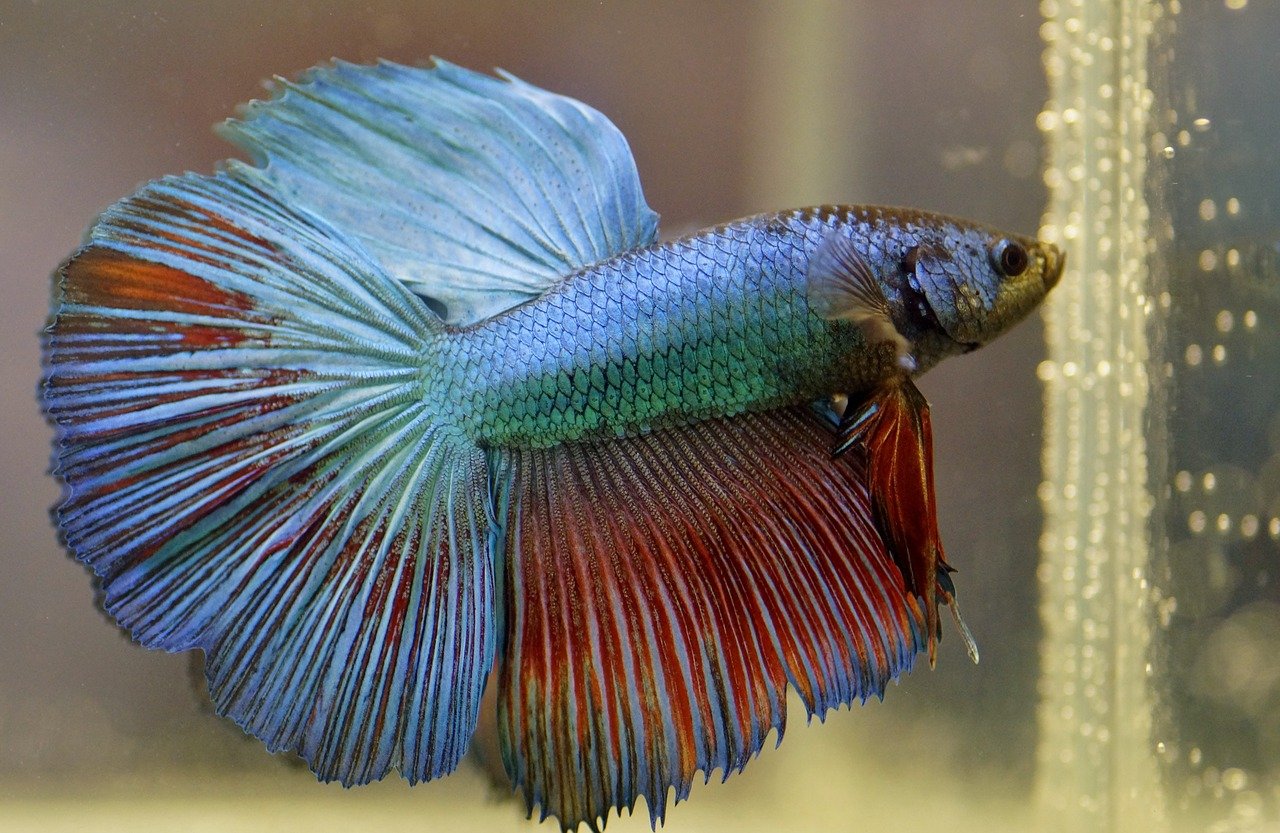Can betta fish live with other fish? We’ve got good news for many of you aquarium enthusiasts: bettas aren’t the horrible tank mates they’re often made out to be — as long as you know something about them. So, what fish can live with bettas safely? Read on to find out.
Originally discovered in the rice paddies of Southeast Asia, bettas were first used as fighting fish by village children. Betting on fish fights later grew to become a popular gambling racket that could have devastating consequences for those who bet on the losing fish. At one point, the king of Siam (now known as Thailand) intervened and began taxing fish fights as a way of regulating the industry.
Generations later, the descendants of bettas bred for their aggressive traits typically aren’t the fish found in our homes. Even so, modern-day betta fish have a largely undeserved bad reputation for being temperamental and territorial.

Can you keep multiple bettas in the same tank?
Despite their reputation, many bettas don’t actually fight to kill. Unless they’ve been specifically bred for aggression — or they occupy a small space with other bettas — most bettas will nip at each other, but they won’t necessarily fight to the death.
Fighting behavior is much more common in male bettas, especially if they’re defending their territory or their food. Females, on the other hand, are sometimes able to live together in a hierarchical society known as a sorority, with one female betta asserting herself as the alpha of the tank. Sororities contain a minimum of four to five females, and it’s best to keep them in a large tank with plenty of room for your bettas to hide.
It probably goes without saying, but you should never introduce a male betta to a sorority, as males and females will fight each other. In fact, even some female bettas are too aggressive to live peacefully within a sorority, so we recommend quarantining your additions before turning them loose to avoid a real-life version of Mean Girls in your tank.

Which fish can live with bettas and make the best tank mates?
While placing two male bettas in the same tank (or a male in a tank with females) is a recipe for a fight, betta fish can actually coexist peacefully with other species. If you’re curious about which fish are compatible with bettas, read on to find your fish’s future tank mate.
- Black Neon Tetra: One of the calmest fish out there, black neon tetras are a shoaling species that won’t grow much larger than an inch long, so they won’t take up too much space in your aquarium.
- Cardinal Tetra: Known for their vibrant red and blue coloring, the cardinal tetra grows up to 2 inches in length. These gentle, peaceful fish are easy to take care of, and they can live for up to five years.
- Celestial Pearl Danio: Also known as the galaxy rasbora, the celestial pearl danio is a lovely fish with an iridescent sheen, a spotted body, and rich orange markings near the fins. These took the aquatic world by storm when they were discovered in 2006, and they won’t grow longer than an inch.
- Cory Catfish: Best suited to larger tanks, cory catfish are laid-back, bottom-dwelling fish that grow to be 1–2.5 inches long. If you’re looking for one of the most low-maintenance tank mates for your betta, the cory is a fantastic option.
- Diamond Tetra: Diamond tetras are a little larger than most tetras, around 2–2.4 inches long, but they’re still small, friendly tank mates that won’t provoke your bettas. They’re also one of the most striking fish you can add to your tank, primarily silver with iridescent flashes of color.

Introducing new fish to a tank
As tempting as it is to drop your new fish into a community and keep your fingers crossed, you’ll most likely wind up with a fight on your hands if you do. And that’s not the only reason it’s a bad idea. New fish may contain bacteria and parasites that can easily spread to other fish in your tank. For that reason, we recommend keeping your new fish in quarantine for at least 14–21 days before you introduce them to their new home.
When you’re ready to introduce your new fish, you can help them get used to the temperature of the new tank by placing them in a plastic bag or a small cup and floating it inside the aquarium. Once your fish have had time to acclimate, it’s time to turn them loose to swim. You’ll want to keep an eye on your tank initially to make sure they’re adjusting well.
Monitoring your tank is also a great way to stop conflicts before they start. If one or more of your fish turn aggressive during the adjustment period, it could be that your new fish will feel much safer when they can hide in the rocks and weeds. But it’s also possible they’re not cut out for communal life, in which case you’ll want to return them to their own tank.
Bettas are clever, independent fish, meaning they won’t be bored or lonely on their own. That being said, you can find a tank mate or two for your fish. With time and patience, your betta will be part of an active, peaceful community.


